March is Women’s History Month, and while we should always honor the accomplishments of authors who create powerful, feminist characters, it’s especially relevant this month.
From Octavia E. Butler to Ursula K. Le Guin, the below authors, listed in chronological order based on when they published some of their earliest works, are just a few of the great female sci-fi and fantasy writers who have helped shape the speculative fiction field.
Andre Norton (first novel published in 1934)

Witch World: Estcarp Cycle
A female author who wrote under a male penname, Alice Mary Norton was the first woman to be inducted into the Science Fiction and Fantasy Hall of Fame. Her books usually follow the hero’s journey, in which an “outsider” realizes their full potential.
Norton's longest running series, Witch World, the first of which was published in 1963, helped put her on the map as a science fiction author, and secured her first Hugo Award nomination.
Leigh Brackett (first short story published in 1940)

The Nemesis from Terra
Golden age of sci-fi author Leigh Brackett is often referred to as “the queen of space opera” for her pulp stories about the intergalactic adventures of Eric John Stark. She also won a Retro Hugo for The Nemesis from Terra, a swashbuckling story of Martian power struggles.
Brackett wrote numerous critically-acclaimed screenplays, and contributed to the screenplay for the Hugo Award-winning landmark movie The Empire Strikes Back.
RELATED: 20 Must-Read Space Opera Books

Leigh Brackett.
Photo Credit: Wikipedia CommonsMadeleine L'Engle (first book published in 1945)

A Wrinkle in Time
On her 40th birthday, actress and author Madeleine L’Engle, disheartened by the numerous writing rejections she had received, resolved to give up writing. But she found it impossible to stop telling stories, and four years later—after 30 rejections—her classic children’s novel A Wrinkle in Time was published in 1962.
The novel, which follows a young, bookish girl searching for her missing scientist father, was awarded the Newbery Medal in 1963. It was adapted into a film in 2018, and remains a beloved novel. L’Engle went on to publish many other acclaimed books, many of which married her interest in hard science and spiritualism.
Anne McCaffrey (first stories published in the 1950s)

Dragonflight
The late Anne McCaffrey broke ground not just for women in sci-fi, but for the genre overall. In 1978, McCaffrey’s novel The White Dragon was the first sci-fi book to land on the New York Times bestseller list. In 1968, she became the first-ever woman to win a Hugo Award, and then in 1969 the first woman to ever win a Nebula Award.
McCaffrey was best known for her science fantasy Dragonriders of Pern series, which comprises more than 23 novels and has been continued by McCaffrey’s son Todd following the author’s death. Dragonflight introduces the unforgettable world of Pern, a planet colonized by people. To survive against the deadly Thread in this alien new world, humans must develop a bond with the telepathic dragons of Pern.
In addition to the Dragonriders of Pern series, McCaffrey wrote numerous other series that blurred the line between science fiction and fantasy, including the Acorna series and the Crystal series.
McCaffrey passed away in 2011 at age 85, six years after having been named the 22nd annual Grand Master by the Science Fiction and Fantasy Writers of America.
Ursula K. Le Guin (first published in 1962)

Earthsea
The late Le Guin had an immense impact on the science fiction and fantasy genre throughout her career.
An influencer of many prolific writers, she herself also won the Hugo Award, Nebula Award, Locus Award, and World Fantasy Award multiple times. Additionally, she was one of the only female authors to be a Grand Master of Science Fiction. Le Guin’s work is sometimes classified as soft science fiction, due to her exploration of social and psychological identity within her books. However, Le Guin rejected this classification.
Le Guin criticized the assumption of some that science fiction characters should be white, and strived to write characters as diverse as the world around us. A Wizard of Earthsea follows Ged, a young magician seeking to control his power after he releases a shadow creature who continues to pursue Ged in hopes of possessing him.
Jane Yolen (first novel published in 1963)

Sister Light, Sister Dark
Jane Yolen has won many awards for her work, including the 1987 Special World Fantasy Award (for Favorite Folktales From Around the World); the 1999 Nebula Award for Novelette (for “Lost Girls”); and the 2009 World Fantasy Award for Lifetime Achievement.
She’s also written many children’s books, the first of which was published when she was just 22 years old. Her fantasy book Sister Light, Sister Dark (which is the first in The Great Alta Saga) takes place in a world without men and features Jenna, a warrior, and her twin Skada, who only emerges in darkness. Together, this powerful duo is prophesied to remake the world.
RELATED: Jane Yolen on Why It's Important to Just 'Write the Damn Book'
Margaret Atwood (first book of poems published in 1964)

The Handmaid's Tale
Margaret Atwood is one of the most well-known writers out there. She often focuses her books around women dominated by a patriarchal society.
One of Atwood’s most famous works, The Handmaid’s Tale, has recently resurged in popularity due to the television adaptation and the current political climate—which some have compared to the dystopian setting of Atwood’s novel.
Winner of the Arthur C. Clarke Award and a five-time Booker Prize finalist, Atwood tends to write dystopian speculative fiction. The Handmaid’s Tale follows the story of Offred, a young woman living in the military dictatorship of the Republic of Gilead following the collapse of the United States. Offred is a handmaid, the term for a slave who is forced to reproduce with men who have sterile wives.
James Tiptree Jr. (first story published in 1968)
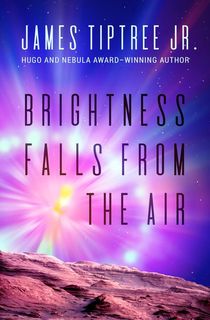
Brightness Falls from the Air
Don’t be fooled by the name: James Tiptree Jr. is actually a pen name for Alice Bradley Sheldon. The author, who notably broke into a male-dominated genre, kept her true identity under wraps for ten years.
Though her actual name was eventually revealed, she continued to write under the pseudonym. Her work often combined elements of the more technology-focused hard science fiction with that of softer psychological-based science fiction.
Though her tone could vary, the constant theme of feminism was always present. Her stories often pointed out the violence and degradations women experience in a male-dominated society, and featured determined, passionate, wholly three-dimensional women.
While her career was heavily focused on short stories, she did write a few novels, including Brightness Falls from the Air, which tells the captivating story of 16 humans who gather on an isolated planet to witness the destruction of a star. As their motives for being there become apparent, the book takes on the tone of a murder mystery.

James Tiptree Jr.
Photo Credit: WikipediaJoanna Russ (first novel published in 1968)

And Chaos Died
The author of feminist literary criticism, in addition to science fiction and fantasy, Joanna Russ influenced readers throughout her life since she was first noticed in the late 1960s.
During her career, she challenged the male dominated world of science fiction—both in authors and audience. She published And Chaos Died in 1970, which tells of an overpopulated planet where nature scarcely exists and creativity and individualism are suppressed. But there are other ways of life out there. And as the novel progresses, they come into conflict.
Vonda N. McIntyre (first short story published in 1970)
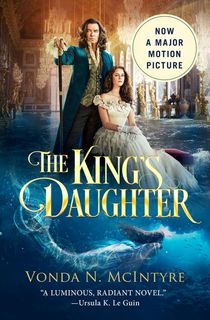
The King's Daughter
The late Vonda N. McIntyre won the first of her three Nebula Awards in 1973, for her novelette “Of Mist, and Grass, and Sand.” The biologist went on to receive numerous awards for her novels Dreamsnake, The King’s Daughter (originally titled The Moon and the Sun), and Little Faces, and also gained a dedicated fandom as a writer of Star Trek novels.
In addition to the acclaim she won for her own novels, McIntyre shaped the speculative fiction community by co-founding the Clarion West Writer’s Workshop in 1971.
Her novel The King’s Daughter, an alternate history set in the 17th century, gained new readers in 2022 after the release of a film adaptation starring Pierce Brosnan.

Vonda N. McIntyre
Photo Credit: AlchetronConnie Willis (first short story published in 1970)

Take a Look at the Five and Ten
Willis has won a whopping 11 Hugo Awards and seven Nebula Awards, and was named a Grand Master by the SFWA in 2011.
Her iconic novels include To Say Nothing of the Dog, Doomsday Clock, Remake, and more. Willis’ 2020 book Take a Look at the Five and Ten is a festive novella that combines speculative fiction, subversive romance, and seasonal charm.
Tanith Lee (first novel published in 1971)
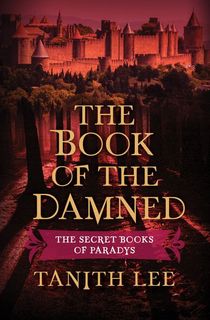
The Book of the Damned
Tanith Lee was a sci-fi, fantasy, and horror writer who wrote over 90 novels. The first woman to win the British Fantasy Award for her novel Death’s Master in 1980, Lee wrote several popular series—focusing on weaving themes of feminism and sexuality into fantasy.
The first book in her popular The Secret Books of Paradys series, The Book of the Damned, is set in an alternative Paris and consists of three novellas. Dealing with everything from vampires to violence and abuse, Lee’s work examines real-life issues faced by women through a fantasy lens.
RELATED: 18 Bloody Good Vampire Books
Pamela Sargent (first book published in 1974)
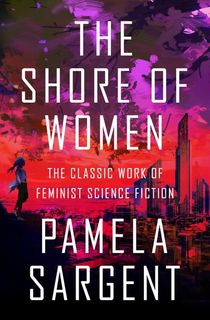
The Shore of Women
Winner of the Nebula Award, science fiction author Pamela Sargent is known for writing alternate history.
In addition to co-writing four Star Trek novels with George Zebrowski, Sargent’s series (including the Seed Trilogy, Venus, and Watchstar) all feature strong, independent women facing different obstacles in very different realities.
Her stand-alone novel, The Shore of Women, takes place in a world run by women—where men have been completely expelled from society, only occasionally brought back to reproduce.

Pamela Sargent.
Photo Credit: AlchetronOctavia Butler (first novel published in 1976)
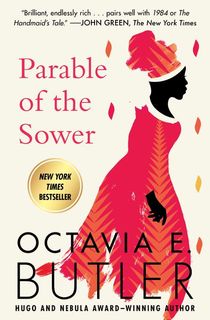
Parable of the Sower
If you’re a fan of science fiction, then it’s unlikely you haven’t heard of this influential author—who’s also won multiple Hugo and Nebula awards, and was the first science fiction writer to receive the MacArthur Fellowship (also known as the "Genius Grant").
Her bestselling novel, Kindred, follows young African-American writer, Dana, as she is transported between her present (1976 Los Angeles) and the past (a pre-Civil War plantation in Maryland). The novel examines race and gender issues, while also taking a close look at slavery and how it impacts modern society.
But that’s not the only influential novel Butler’s put her name to. While there are countless books to choose from, the Earthseed series (which includes Parable of the Sower and Parable of the Talents) is particularly relevant in today’s climate, as protagonist Lauren Olamina flees an evil dystopian leader, settling a new community in Northern California.
Lauren's strength and endurance through countless odds, as well as her leadership abilities, make her a force to be reckoned with.

Photograph of Octavia E. Butler seated by her bookcase.
Photo Credit: Patti Perret, 1986. The Huntington Library, Art Collections, and Botanical Gardens.Jessica Amanda Salmonson (first collection published in 1978)
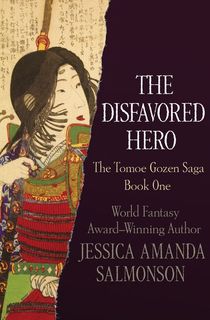
The Disfavored Hero
Fantasy and horror author Jessica Amanda Salmonson is the author of several novels and short story collections.
In addition to writing, Salmonson has also edited several collections—usually containing weird tales and ghost stories. Her fantasy anthology Amazons!, which she contributed to as well as edited, won the World Fantasy Award in 1980, and her Tomoe Gozen trilogy (later retitled to The Disfavored Hero) tells the story of an alternate feudal Japan and a young woman, Tomoe Gozen, who is a samurai of incredible skill.
Tomoe Gozen is just one example of the powerful female characters that populate Salmonson's work.
Related: 9 Sagas to Keep You Satisfied Until The Winds of Winter Release Date
Pat Murphy (first story published in 1979)

The Falling Woman
Co-founder of the James Tiptree Jr. Award (now known as the Otherwise Award), Pat Murphy is the author of award-winning science fiction and fantasy.
Recipient of the Nebula Award, Philip K. Dick Award, and World Fantasy Award, Murphy’s novels and short stories immerse readers into new worlds and introduce them to strong, intelligent women.
Her Nebula Award-winning novel, The Falling Woman, follows Elizabeth Butler—an archeologist in Yucatán who can communicate with the ghosts of the men and women who once lived on the sites she and her colleagues are excavating.
In addition to fiction, Murphy has also worked at Exploratorium, San Francisco’s museum of science, art, and human perception, where she has published non-fiction science books.

Pat Murphy at Worldcon in Helsinki, 2017.
Photo Credit: WikipediaLisa Goldstein (first novel published in 1982)
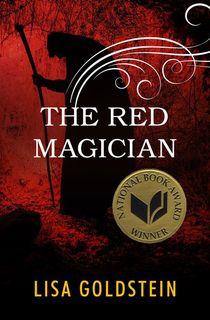
The Red Magician
Lisa Goldstein’s first and National Book Award-winning novel, The Red Magician, helped put her on the map as a fantasy and science fiction author.
Her popular novel takes place during the Holocaust, and tells the story of Kicsi—a young, Jewish girl who discovers the power of magic in dark times. Her books have been nominated for Nebula, Hugo, and World Fantasy Awards, and often incorporate historical events with a fantasy spin.
Robin Hobb (first novel published in 1983)

Assassin's Apprentice
Margaret Astrid Lindholm writes fantasy under the pseudonym Robin Hobb. And if you love epic fantasy, then you owe it to yourself to explore Hobb’s series, which have been praised by George R.R. Martin himself.
Hobb has written several trilogies set in the Realm of the Elderlings world, including the Farseer Trilogy, the Liveship Traders Trilogy, and the Tawny Trilogy. Her beloved world is sprawling and detailed, but don’t let that intimidate you — most books in her oeuvre are an accessible adventure even if you haven’t read previous novels in the series.
Tamora Pierce (first novel published in 1983)

The Lioness Quartet
Tamora Pierce is beloved for her YA epic fantasy series, most of which are set in the Tortall universe. Her books are resplendent with talking animals, compelling magical systems, female warriors, and just enough romance.
Pierce’s most iconic series might be the Lioness Quartet, which follows a young girl named Alanna who disguises herself as a boy to train as a knight of Tortall. Alanna will soon find a whole new generation of fans, as Pierce’s classic book series is finally getting the TV adaptation it deserves.
Nalo Hopkinson (first novel published in 1998)
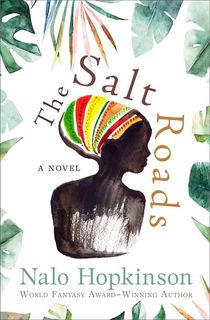
The Salt Roads
Nalo Hopkinson is the winner of a John W. Campbell Award, a Locus Award, and a World Fantasy Award, among numerous other accolades. In 2020, she was also named the 37th Damon Knight Grand Master by the Science Fiction and Fantasy Writers of America.
This Canadian speculative fiction author was born in Jamaica, and now resides in California. Hopkinson’s novels and short fiction are full of vivid and unforgettable imagery often inspired by Caribbean folklore and culture, and exploring themes of intersectional feminism.
Hopkinson’s novel The Salt Roads was a 2004 Nebula Awards finalist. The book begins in 1804, when a group of women — led by a lesbian spiritual leader and midwife — evoke the goddess Ezili during a funeral. Ezili, the deity of romance and sexual attraction, then visits women across the globe and throughout time, transforming their journey and her own.
Kameron Hurley (first short story published in 1998)

God's War
If you’re looking for a powerful, female-driven story, look no further than Kameron Hurley’s Bel Dame Apocrypha series.
The books follow Nyx, a former government assassin entangled in a never-ending war. It’s rooted in a world of science fiction, and challenges societal roles—specifically that of women. In addition to her fiction, Hurley is also the author of The Geek Feminist Revolution, which collects several of her Hugo Award-winning blog essays, as well as new work, to serve as a commentary on the state of the geek world.
RELATED: 11 Nonfiction Geek Books By Women
Jo Walton (first novel published in 2003)

Among Others
Welsh-Canadian novelist and poet Walton has won Nebula, Hugo, Mythopoeic, Tiptree, and World Fantasy Awards. She has penned 15 books. Her 2012 book Among Others is one of only seven books to have been nominated for both the Nebula Award, Hugo Award, and World Fantasy Award.
The innovative novel follows a young girl in Wales who turns to sci-fi and fantasy to survive life with her eccentric, magical mother, and was called “a lovely story, unlike anything I’ve ever read before” by Patrick Rothfuss.
Nnedi Okorafor (first novel published in 2005)

Binti
Okorafor started her career writing books for young adults, and has since moved on to adult novels—with her first adult novel, Who Fears Death, winning the 2011 World Fantasy Award for Best Novel.
Her Hugo and Nebula Award-winning novel, Binti is a science fiction novella that tracks Binti’s journey as she becomes the first of the Himba people offered a spot in the galaxy’s most superior learning institution, Oomza University. But heading to University means leaving behind her family and customs to be with people who don’t share or respect them.
Okorafor’s driven, female characters stand out among the rest, as their unwillingness to settle for the norm is highlighted throughout her work. Okorafor also defined and originated the term Africanfuturism.
RELATED: Black Science Fiction and Fantasy Authors You Need to Read

Nnedi Okorafor.
Photo Credit: WikipediaCharlie Jane Anders (first novel published in 2005)

All the Birds in the Sky
Charlie Jane Anders is a Lambda, Hugo, Nebula, and Locus Award-winning author of short fiction and novels.
Her 2016 book All the Birds in the Sky won the Nebula Award for Best Novel, and explores the relationship between a witch and a tech developer in near-future dystopian San Francisco. Her novel The City in the Middle of the Night is set on the planet January, and follows Sophie, a young woman banished from her regimented city into the wilds of the planet after she falsely confesses to a crime to save the woman she loves.
In addition to her acclaimed sci-fi and fantasy writing, Anders, the co-founder of pop culture website io9, is also known for her nonfiction writing about science fiction and fantasy. For instance, check out her piece on the influence of Le Guin's Left Hand of Darkness.
N.K. Jemisin (first short fiction published in 2005)

The Fifth Season
Jemisin made history when she became the first author to ever win the Hugo Award for Best Novel three consecutive years in a row, and to win the Best Novel award for every book in a series, both for her acclaimed Broken Earth trilogy.
The trilogy is set in a continent called the Stillness, wracked by apocalyptic geologic events, and dominated by a complex, powerful magical system. Jemisin is also known for her fantasy Inheritance trilogy and her short fiction. Her latest release is How Long 'Til Black Future Month, Jemisin's first collection of short stories.
RELATED: Afrofuturism Books That Explore the Past, Present, and Future
Silvia Moreno Garcia (first short fiction published in 2006)

Mexican Gothic
Mexican-Canadian novelist Moreno-Garcia is an editor and writer whose work blurs the lines between fantasy and horror. Her 2019 novel Gods of Jade and Shadows is a romantic tale of men and mortals, set in southern Mexico during the Jazz Age.
Her novel Mexican Gothic is a supernaturally sinister story about Noemí, a socialite who makes a pilgrimage to a remote area of Mexico to rescue her cousin from an enigmatic evil.
RELATED: Unsettling Horror Books By Women
Ann Leckie (first short story published in 2006)

Ancillary Justice
Author Ann Leckie studied with Octavia Butler, one of the other authors on this list, at the renowned Clarion Science Fiction and Fantasy Writers' Workshop. In 2013, Leckie’s debut novel Ancillary Justice took the sci-fi and fantasy world by surprise, netting the Hugo Award for Best Novel, the Nebula Award, and the Arthur C. Clarke Award. The novel's sequels were also both awarded the Locus Award.
Ancillary Justice explores questions of identity through the eyes of Breq, a soldier. Breq has the body of a human woman but the consciousness of a massive warship, Justice of Toren. Reduced to life in a fragile human container, Breq’s search for answers — and revenge— powers a novel that will thrill fans of Ursula K. Le Guin.
Leckie considers to expand her horizons and push the boundaries of speculative fiction. In 2019 she published her first fantasy novel, The Raven Tower.
Rebecca Roanhorse (first short story published in 2017)

Black Sun
In 2018, Rebecca Roanhorse won both the Hugo and Nebula Award for her short story, “Welcome to Your Authentic Experience.” Soon after, she released her acclaimed Sixth World fantasy series, which is set in Dinétah — once known as the Navajo nation — after a cataclysmic flood.
In 2020 Roanhorse released Black Sun, the first in an acclaimed new series that author Stephen Graham Jones said “stands shoulder to shoulder with the very best fantasy out there. There's Martin, there's Jemisin, and now there's Roanhorse.”
This post is sponsored by Open Road Media. Thank you for supporting our partners, who make it possible for The Portalist to celebrate the sci-fi and fantasy stories you love.
















